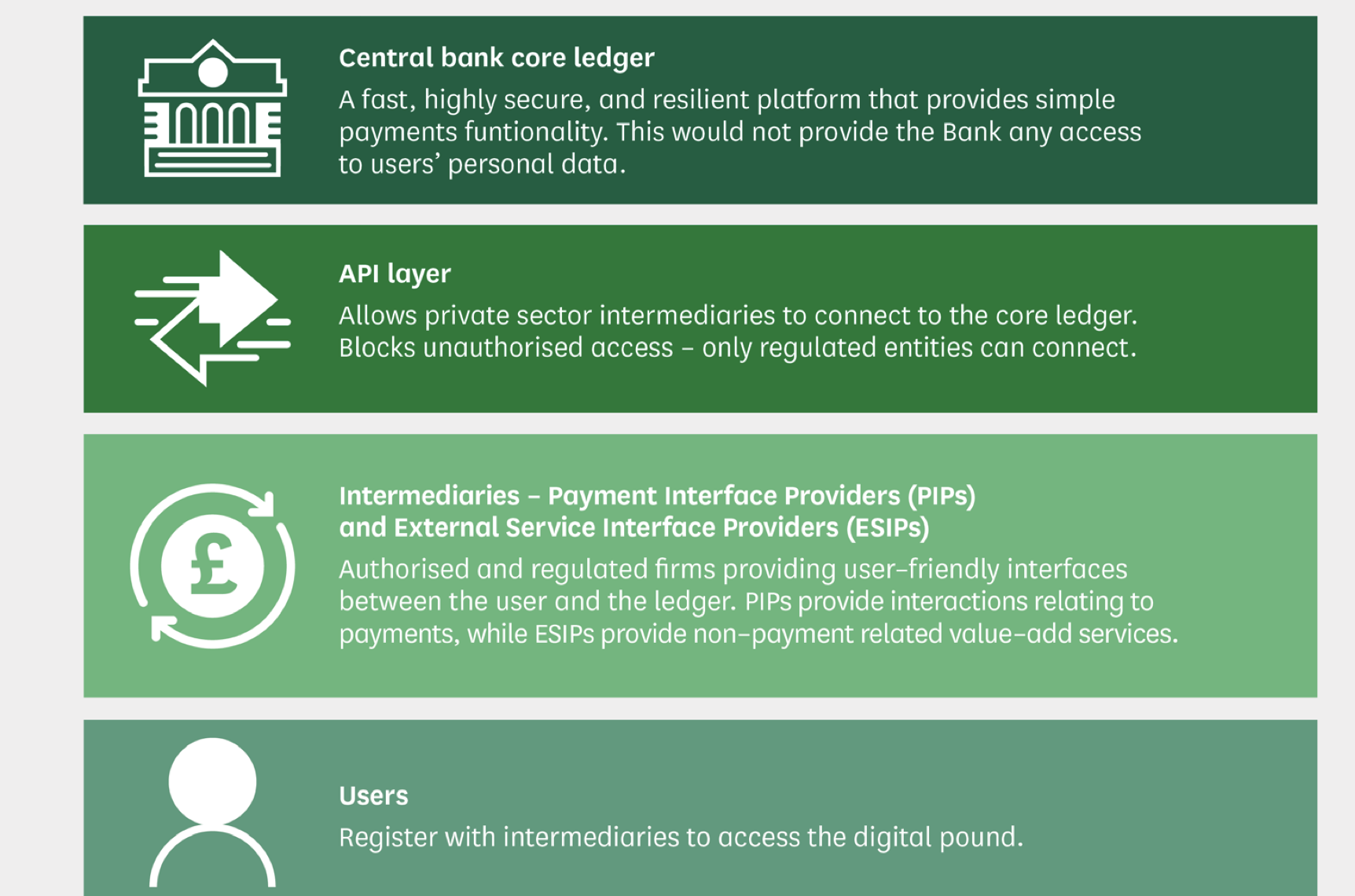
A Central Bank Digital Currency (CBDC) is an electronic form of central bank money that can be used to make payments.1 A CBDC can be designed for use between financial institutions to settle trades in financial markets (a ‘wholesale CBDC’) or for more widespread use by households and businesses to make payments (a ‘retail CBDC’ or ‘digital banknote’). CBDCs are distinct from wider forms of cryptoasset, including so- called cryptocurrencies such as Bitcoin and Ether, that are created by the private sector and are not backed by a central bank or government.2 The Bank of England and Treasury have consulted on a potential future introduction of a retail CBDC, which is, therefore, the primary focus of this Report.
2. According to the Atlantic Council, a think tank, 130 countries are currently exploring a CBDC, with 11 of them having launched a CBDC and 21 in a pilot phase.
3. There are currently three main forms of money in use in the UK economy, which are summarised below.
- Physical cash: banknotes and coins. Banknotes account for 94 per cent of the physical currency in the UK. The majority of UK banknotes are issued by the Bank of England and represent the only form of ‘public money’ (or ‘central bank money’) currently available to households and businesses.4
- Bank deposits: electronic deposits held in accounts with commercial banks, which represent around 95% of the money held by households and businesses.5 Bank deposits are a form of ‘private money’ and are created when banks make loans.6
- Central bank reserves: electronic deposits held by commercial banks in accounts at the Bank of England and used by banks to make payments to each other. Like Bank of England banknotes, central bank reserves are a form of ‘central bank money’ created by the Bank of England.7
4. Potential new forms of digital money, including both retail and wholesale CBDCs, would supplement these existing forms of money. A retail CBDC would represent an additional, digital form of ‘public money’ (or ‘central bank money’) that would be available to households and businesses to pay for goods and services, akin to a digital banknote.
- 1 More precisely, the Bank for International Settlements defines a CBDC as a digital payment instrument, denominated in the national unit of account, that is a direct liability of the central bank: Bank for International Settlements, ‘Central bank digital currencies: foundational principles and core features’, 9 October 2020, p 3.
- 2 For a summary of CBDCs and how they compare to wider forms of cryptoasset, see House of Commons Library, ‘Central bank digital currencies: The digital pound’, CBP 9191, 8 March 2023.
- 3 Atlantic Council, ‘Central Bank Digital Currency Tracker’, accessed 21 November 2023
- 4 Nearly 10% of the banknotes that circulate in the UK economy are issued by Scottish and Northern Irish
commercial banks, but those banknotes themselves are backed by Bank of England notes, UK coins, and funds on deposit at the Bank of England. In many countries the central bank also issues coins, but in the UK coins are issued by the Royal Mint. See Bank of England, ‘Discussion Paper – Central Bank Digital Currency: Opportunities, challenges and design’, 12 March 2020, p 9.
- 5 Bank of England and HM Treasury, ‘Consultation Paper – The digital pound: a new form of money for households and businesses?’, 7 February 2023, p 22
- 6 Bank of England, ‘Money creation in the modern economy’, 14 March 2014
- 7 Bank of England, ‘Discussion Paper – Central Bank Digital Currency: Opportunities, challenges and design’,
4. The digital pound: still a solution in search of a problem?
new wholesale CBDC would be used to settle high-value transactions between financial institutions, including the settlement of securities and foreign exchange, much as central bank reserves currently do. New forms of digital ‘private money’ may also emerge and become more widely used for payments in the future.
Bank of England and HM Treasury work on CBDC
5. In March 2020 the Bank of England published a discussion paper on the possibility of introducing a retail CBDC in the UK.9 The paper set out some of the benefits and risks of a UK CBDC and discussed its potential design. In April 2021 HM Treasury and the Bank of England established a joint taskforce to coordinate further work on the exploration of a potential UK CBDC.10
6. In February 2023 the Bank of England and HM Treasury published a consultation paper on the potential design of a retail CBDC, which they call ‘the digital pound’.11
7. The design for a digital pound proposed by the Bank of England and Treasury is for a ‘platform model’, in which the Bank of England would provide the core public infrastructure and issue the digital pounds, which would be recorded in a ‘core ledger’ (see Figure 1). Regulated private sector firms—Payment Interface Providers (PIPs) and External Service Interface Providers (ESIPs)—would then interface with the core ledger to provide digital wallets for households and businesses to hold their digital pounds. These intermediaries would manage all user-facing interactions.
Read full report https://committees.parliament.uk/publications/42395/documents/210641/default/
